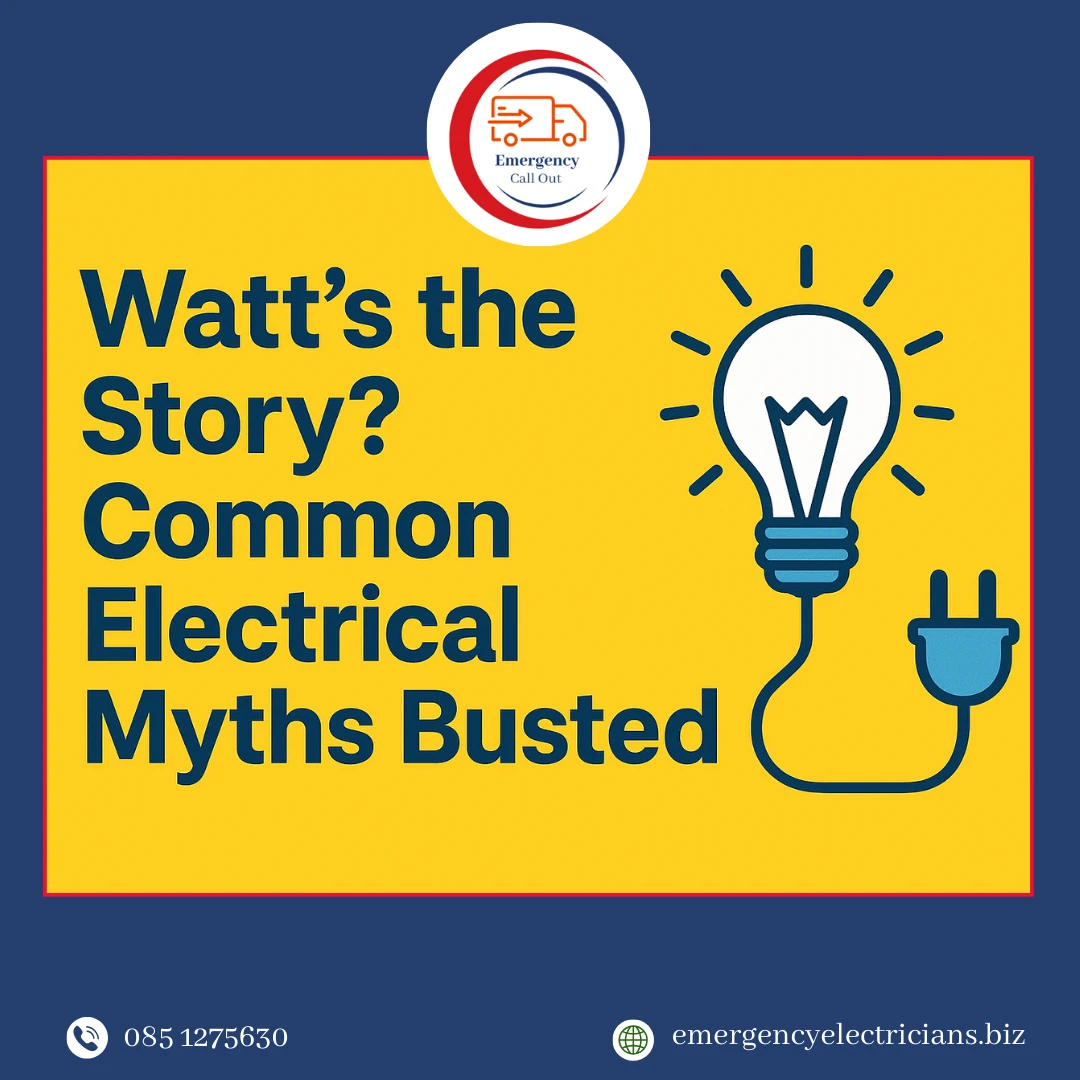Myth: Low voltage can’t hurt you
This one pops up all the time, but it’s not true. While the term “low voltage” might make it sound harmless, even small amounts of electricity can be dangerous depending on the situation. The amount of current (measured in amps) and the path it takes through your body matters far more than just the number of volts. For example, certain low-voltage systems can still deliver a shock strong enough to cause harm if the conditions are right — especially if water or damp surfaces are involved. So never assume you’re safe just because the numbers look small.
Myth: If it works, it must be safe
Not quite. Just because a cable, socket, or extension lead still powers your devices doesn’t mean it’s in good condition. Old, frayed, or overheated wires can continue to “work” right up until the moment they spark, overheat, or fail completely. Think of it like driving a car with bald tyres — the wheels still spin, but the risk is enormous. Always check your leads and sockets for signs of wear, cracks, or overheating. If something looks past its prime, it’s time to replace it.
Myth: Rubber-soled shoes will protect you
This one is half-true, but not reliable. While rubber is indeed an insulator, ordinary trainers or shoes you buy on the high street aren’t designed to provide electrical protection. They may reduce the risk slightly, but they’re not a guarantee of safety. Professional electricians wear specially rated boots designed for electrical work, and even then, they combine that protection with proper procedures and insulated tools. Your everyday footwear simply isn’t up to the job.
Myth: Electricity always takes the shortest path
Here’s a big misconception. Electricity doesn’t just look for the “shortest” route — it takes all available paths to reach the ground. That means if there’s more than one way for the current to travel, it will divide itself across them. This is why proper grounding is essential, and why people sometimes get shocks even when they think they’re not in the direct line of fire. Electricity can and will take unexpected routes if they’re available.
Myth: DIY is fine if you’re careful
This is the most dangerous myth of all. Many people think that as long as they’re cautious and follow a YouTube tutorial, they’ll be fine. But electricity doesn’t care how careful you are — if something is wired incorrectly or installed without the proper knowledge, it’s a hazard waiting to happen. That’s exactly why regulations exist. From overloaded circuits to hidden faults behind the walls, DIY electrical work can create risks you might not see until it’s too late. When it comes to your home’s electrics, hiring a qualified electrician is always the safest option.
Why Busting These Myths Matters
Electrical myths might sound like harmless stories, but taking them at face value can put you, your family, and your property at risk. A shock, a fire, or even just persistent electrical faults are all consequences of not knowing the facts.
At King Electrical, we believe in combining professional expertise with straightforward advice. We’re here to give you the facts — not the fiction — so you can enjoy peace of mind knowing your home is safe, sound, and powered the right way.
Don’t leave your safety to chance or rely on electrical myths. If you’ve noticed flickering lights, buzzing sockets, old wiring, or just want the reassurance that everything in your home or business is up to standard, give King Electrical a call. Our qualified team serves Kildare, Meath, and Dublin, delivering reliable, professional service every time.
Contact us today at 085 1275630 or visit www.emergencyelectricians.biz — let’s keep your electrics safe, efficient, and myth-free.
